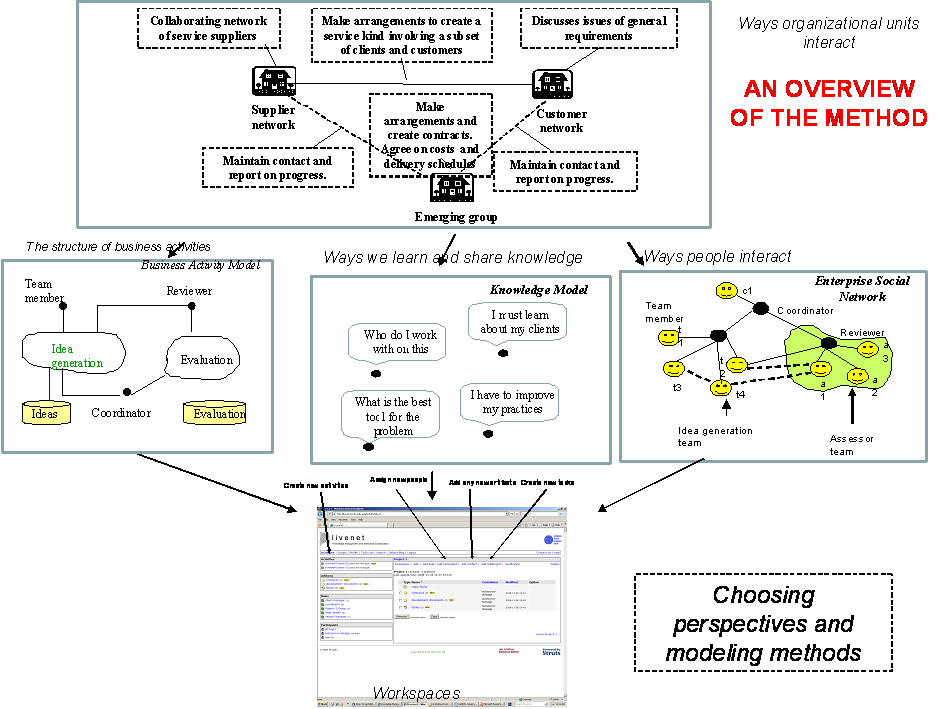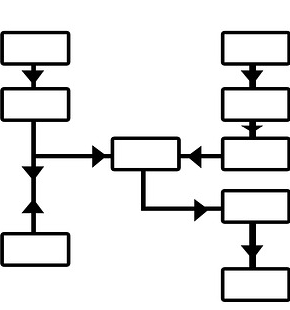Details
The methodology focuses on developing collaborative environments for evolving systems. It emphasizes large scale collaboration now found in large organizations who want to facilitate the exchange of knowledge and innovation across business units.
The methodology supports the trend towards modeling systems that evolve in increasingly complex environments. It supports a focus on evolution within complex environments, the structure of business activities to support collaboration, and a holistic approach that integrates systems into their social and technical environment.
To do this the analysis is approached from a number of perspectives both to improve cognition within complex environments and to facilitate change by providing a systematic way to define change a perspective at a time.

Perspectives:
The organizational perspective, which defines the way business units interact,
The business activity perspective, which defines the way organizations structure their activities and the people, tasks and artifacts that make up the activity.
The social perspective, which defines the way people interact both in their roles and informally,
The knowledge perspective that defines the way people learn, innovatate and create new knowledge.
The perspectives are described by different models, which are combined and converted into an implementation, usually based on workspaces.
Each of the perspectives is different models but they are integrated into a holistic model which is then converted to an implementation.
The methodology defines the concepts for each perspective but the modeling constructs can be chosen by developers. A number of constructs are suggested although designers are free to choose alternates. The constructs are lightweight in nature supporting the ability to model the more volatile collaborative environments.
The site provides guidelines for gathering information about the different perspectives and guidelines. It proposes a three phase approach. The phases are:
Define the intention, especially the knowledge needed by the business and the processes to share and create it through collaboration,
Design the business architecture, or the ways to arrange the work practices within the business to use the knowledge, and
Design the services to support the work practices in the business architecture.


